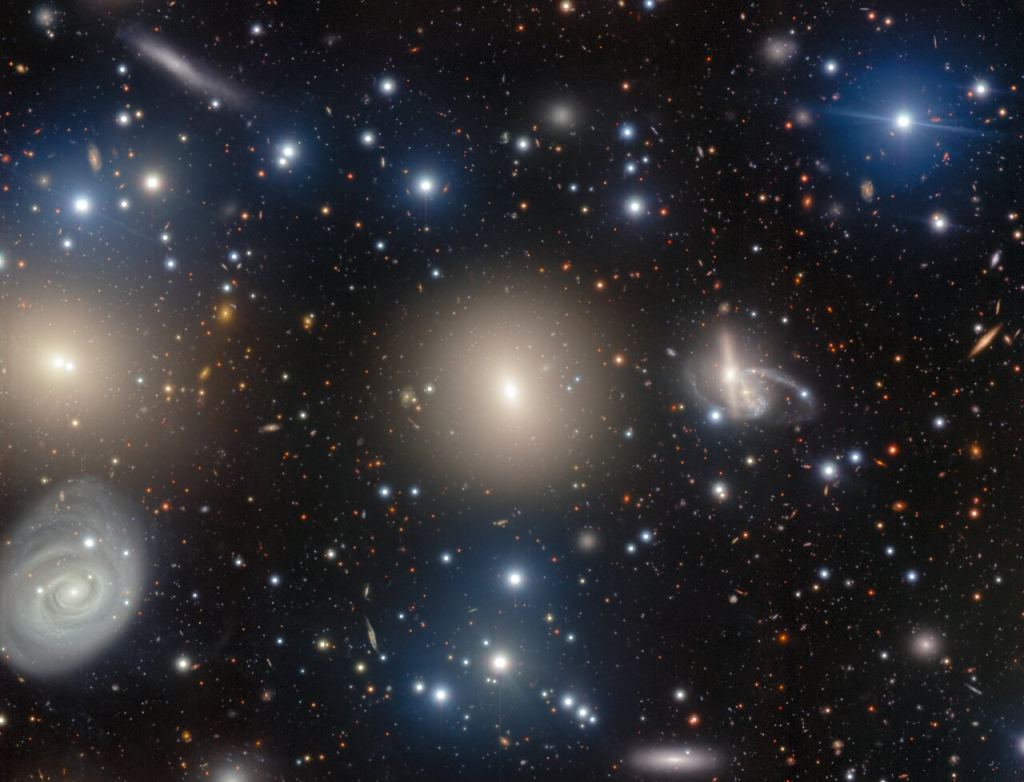Gravitational lensing is a concept where dark matter distorts space revealing its presence through its interaction with light. ESA's Euclid mission is mapping out the gravitational lensing events to chart the large scale structure of the Universe. Euclid is also expected to discover in excess of 170,000 strong gravitational lensing features too. AI is expected to help achieve this goal but machine learning is still in its infancy so human beings are likely to have to confirm each lens candidate.
Gravitational lensing was originally predicted by Einstein's theory of general relativity. The theory proposed that a massive object such as galaxy or even a cluster of galaxies, would warp and bend space, thus magnifying light from more distant objects. Light travels through space in a straight line but bend space, for example in a gravitational field, and light appears to bend too. The lensing effect can result in various visual phenomenon such as arcs, multiple lensed images or even a complete ring around an object which became known as an Einstein ring.
Observing gravitational lensing gives a great insight into the distribution of matter across the universe. One probe which is exploring and studying the phenomenon is the Euclid mission. It was launched by the European Space Agency in 2023 to study the lensing events. Studying the lenses and analysing the resultant images across billions of visible galaxies allows for a detailed map to be built revealing the distribution of both dark matter and dark energy. This will help us to understand how dark matter shapes structures in the Universe and how dark energy drives the accelerated expansion of the universe.
One aspect of the Euclid mission is the Euclid Wide Survey (EWS) which will observe 14,000 deg2of the sky hunting for gravitational lenses. It is predicted the study will find 170,000 strong gravitational lenses (a strong gravitational lens produces a very strong distorted image while weak events are much more subtle.) The challenge is in identifying the lensing features which is challenging for human beings to process that amount of data.
Machine learning algorithms have been used previously to detect the strong lenses including the use of convolutional neural networks (CNNs.) These networks are often used in imaging analysis and comprise of several layers. An image would be used as input, it would be analysed through several different layers but must achieve a specified threshold before being passed on to the next. Eventually, if it successfully passes through all layers of analysis, a strong gravitational lens should be identified.
A team of researchers led by R. Pearce-Casey from the Open University in the UK has identified that the machine learning technology can present a number of false positives still requiring human visual inspection of the results. Their research aims to identify a higher quality CNN model and strong starting point to improve the output of the CNN based detection process. To test their approach they took images from the Euclid Early Release Observation run of the Perseus field and applied their CNN analysis. The results were promising however when applied to real Euclid EWS data the results still required human verification.
The team are now exploring if a second filtering stage ahead of CNN analysis may be needed to fine tune the identification of strong lenses. They conclude that currently, there is no alternative to the good old fashioned human eyeball to confirm the existence of strong and especially weak gravitational lenses to eradicate the false positives from machine learning.
 Universe Today
Universe Today



